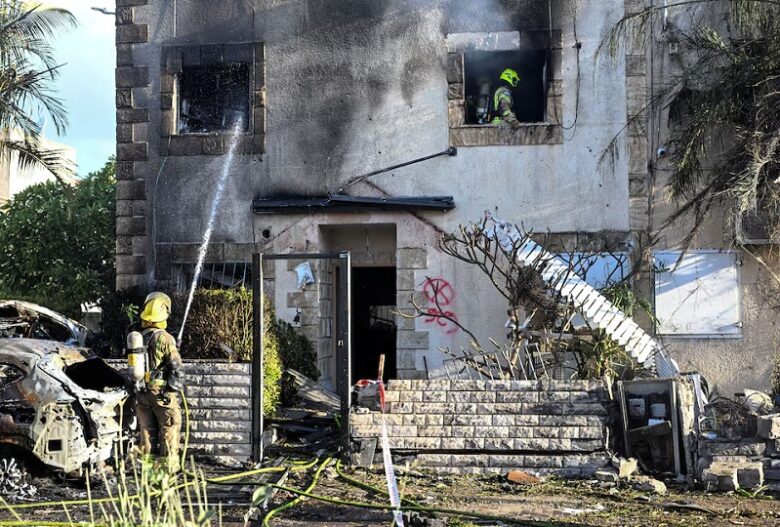Hezbollah and Israel traded intense fire into Sunday, with Israeli airstrikes targeting southern Lebanon in the most significant bombardment in nearly a year. Meanwhile, Hezbollah retaliated by launching rockets into northern Israel.
Israeli Defence Minister Yoav Gallant emphasised that strikes would continue until it was safe for evacuees in the north to return, hinting at a protracted conflict as Hezbollah vowed to keep fighting until a ceasefire in Gaza.
“We have dealt Hezbollah blows it never anticipated in recent days,” Israeli Prime Minister Benjamin Netanyahu stated in a video message. “If they haven’t understood the message yet, they will.”
The fighting, which has escalated dramatically in the last week, started when Hezbollah opened a second front against Israel, claiming solidarity with Palestinians amid the Israeli offensive in Gaza.
On Saturday, the Israeli military reported striking approximately 290 targets, including thousands of Hezbollah rocket launcher barrels, with plans to continue its attacks.
In response, Israel closed schools, limited public gatherings in the north, and instructed hospitals to relocate patients and staff to protected areas, many of which are underground or designed to withstand rocket strikes.
Air raid sirens rang out frequently across Israel as around 150 rockets, cruise missiles, and drones were launched overnight and into Sunday.
Most were intercepted by Israel’s air defence systems, including an “aerial target” that approached from the east, according to the military.
Multiple buildings were hit, including a house heavily damaged near Haifa. Rescue teams treated the injured, but no deaths were reported. Residents had been advised to remain close to bomb shelters and safe rooms.
On Sunday, Hezbollah claimed it targeted an Israeli barracks and another position using squadrons of attack drones.
It also stated that it launched rockets at military-industrial sites as an “initial response” to attacks last week, during which pagers and walkie-talkies used by its members exploded.
Widely attributed to Israel, the recent attacks resulted in 39 deaths and over 3,000 injuries, though Israel has neither confirmed nor denied its involvement.
An official from the Islamic Resistance in Iraq, comprising Iran-backed armed factions, stated that they conducted cruise missile and explosive drone strikes against Israel at dawn on Sunday as part of “a new phase in our support front” with Lebanon.
“The escalation in Lebanon means escalation from Iraq,” the official remarked. This development raises concerns that the conflicts in Gaza and Lebanon could extend throughout the region.
U.N. special coordinator in Lebanon, Jeanine Hennis-Plasschaert, emphasized in a post on X that “with the region on the brink of an imminent catastrophe, it cannot be overstated enough: there is NO military solution that will make either side safer”.
Escalating Violence
The intensifying attacks follow an Israeli airstrike aimed at Hezbollah commanders in a suburb of Beirut, which has resulted in a death toll of 45, according to the Lebanese health ministry.
Hezbollah reported that 16 members, including senior leader Ibrahim Aqil and commander Ahmed Wahbi, were killed in what has become the deadliest strike in nearly a year of conflict with Israel.
Israel’s military stated that it targeted an underground meeting of Aqil and leaders of Hezbollah’s elite Radwan forces, claiming to have nearly dismantled their military command structure.
The airstrike destroyed a multi-storey residential building and damaged a nearby nursery, with at least three children and seven women among the casualties.
Israel demands that Hezbollah cease fire and withdraw its forces from the border area, insisting on compliance with a U.N. resolution established in 2006, regardless of developments in Gaza.
Since Hezbollah began launching rockets at Israel in October in solidarity with Palestinians, tens of thousands of people have fled their homes on both sides of the Israel-Lebanon border.
With at least 84 fatalities in Lebanon over the past week, the conflict’s death toll has exceeded 750 since October, marking the most severe flare-up between Israel and Hezbollah since the 2006 war.
The Gaza conflict erupted on October 7 when Hamas attacked Israel, killing around 1,200 people and taking approximately 250 hostages, as per Israeli figures.
Israel’s retaliatory strikes have killed over 41,300 Palestinians, according to the local health ministry, leading to a humanitarian crisis and displacing nearly the entire population of 2.3 million in Gaza.
YOU MAY ALSO READ: 50 killed in Iran’s massive coal mine explosion









Got a Question?
Find us on Socials or Contact us and we’ll get back to you as soon as possible.